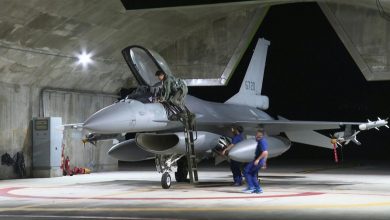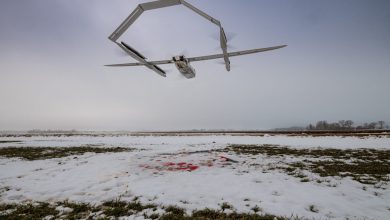Taiwan activates first M1A2T Abrams battalion

Taiwan’s military has formally inducted its first unit of U.S.-made Abrams M1A2T tanks, a move that underscores the island’s effort to modernize its armed forces in the face of growing pressure from China.
President Lai Ching-te presided over a commissioning ceremony on Friday at the Hukou military base in Hsinchu County. The event marked the official activation of the Republic of China Army’s 3rd Combined Arms Battalion, 584th Armor Brigade, the first unit to receive the new M1A2Ts.
According to Taiwan’s Ministry of National Defense, the battalion has now fully transitioned from older CM11 tanks to the more advanced U.S.-supplied platforms.
In a statement, the ministry said, “President Lai Ching-te today presided over the activation ceremony of the ROC Army’s 3rd Combined Arms Battalion, 584th Armor Brigade, marking the unit’s re-equipment with M1A2T tanks. This milestone marks the ROC Armed Forces’ commitment to modernization and combat readiness.”

Taiwan has ordered a total of 108 Abrams tanks from the United States, under a deal valued at approximately NT$40.5 billion (US$1.31 billion). The first 80 vehicles have already been delivered, with the remaining 28 expected to arrive by early 2026.
The newly equipped 3rd Combined Arms Battalion includes two tank companies operating the M1A2Ts. Additional units are expected to follow, with both the 1st and 2nd Combined Arms Battalions each receiving two tank companies outfitted with Abrams. One of the mechanized infantry battalions under the 269th Brigade is also slated to receive the upgraded tanks.
The M1A2T, a modified variant of the U.S. Army’s M1A2 Abrams, features a 120 mm smoothbore main gun capable of penetrating up to 850 mm of homogenous steel. It is equipped with a Hunter-Killer targeting system, remote-controlled turret, and an Inter-Vehicular Information System (IVIS) that allows for real-time data sharing among friendly units.
Despite the tank’s battlefield capabilities, military experts in Taiwan are debating its most effective use. Sheu Jyh-shyang, a research fellow at the Institute for National Defense and Security Research (INDSR), said the Abrams would likely not be used for coastal defense in the event of a Chinese amphibious landing, citing likely air and naval superiority by the People’s Liberation Army.
“In that scenario, the M1A2Ts may not survive air and sea attacks,” Sheu said, adding that the tanks may instead play a critical role in urban warfare scenarios.
Northern Taiwan’s dense urban landscape makes the M1A2T suitable for armored task forces operating in joint coordination with other units during urban defense missions, he noted.
Retired military officer Huang Chun-min echoed that view, stating that the tanks could be deployed both for traditional beach counterattacks and in urban combat. He added that the Army could expand its training programs to strengthen the tanks’ roles in mobile air defense and close air-ground coordination.
Lin Ying-yu, a defense scholar at Tamkang University, welcomed the continued delivery of M1A2Ts but noted that the Army still faces challenges in integrating a growing number of complex systems, including the Abrams, HIMARS rocket launchers, and Altius-600M loitering munitions.
While the presence of Abrams tanks on the island signals growing U.S.-Taiwan defense cooperation, the challenge for Taiwan’s military will be maximizing their use under potential wartime conditions that differ sharply from conventional battlefields.





